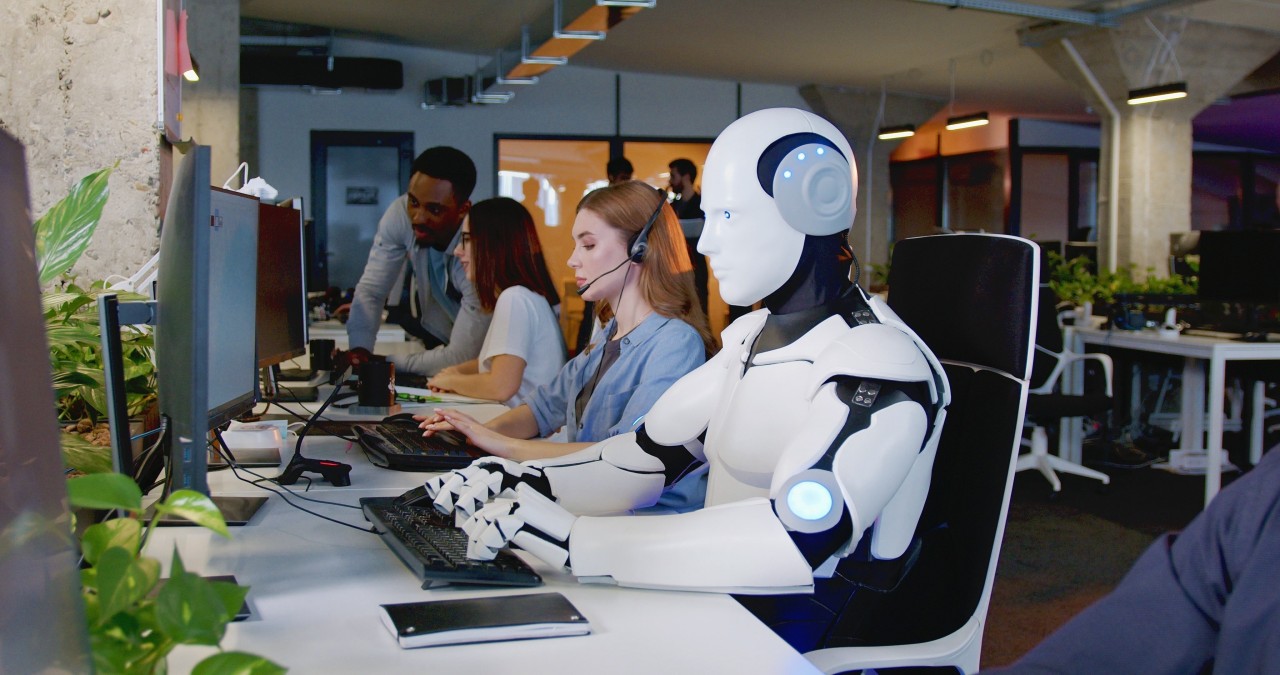Over the past few decades, technological advancements have fundamentally altered how people work, collaborate, and communicate.
The world of work is undergoing a monumental transformation. Over the past few decades, technological advancements have fundamentally altered how people work, collaborate, and communicate. As we move into the future, a new wave of emerging technologies promises to further revolutionize industries, creating opportunities and challenges for businesses and employees alike.
From artificial intelligence (AI) to augmented reality (AR) and the increasing adoption of automation, these innovations are not just shaping how we work but also redefining what it means to be employed in the 21st century. Let’s take a closer look at the emerging technologies set to shape the future of work.
1. Artificial Intelligence (AI) and Machine Learning
Artificial Intelligence and Machine Learning are perhaps the most talked-about technologies shaping the future of work. AI, which involves creating machines or software capable of performing tasks that usually require human intelligence, has already begun transforming many industries.
In the workplace, AI can automate routine tasks, enhance productivity, and improve decision-making. Machine learning, a subset of AI, enables systems to learn from data and make predictions or recommendations. For example, AI-driven algorithms are being used in HR departments to streamline the hiring process, improving efficiency and reducing bias. In healthcare, AI assists in diagnosing diseases with greater accuracy, while in customer service, AI-powered chatbots provide immediate responses to inquiries.
AI and machine learning are not only improving efficiency but also enabling the creation of new roles that require human oversight, such as AI specialists and data analysts. As businesses continue to adopt AI-driven solutions, employees will need to adapt by upskilling to remain competitive in the job market.
2. Robotics and Automation
Robots and automation systems are already being used in industries such as manufacturing, logistics, and agriculture. The future of work will see increased integration of robotics in various sectors, driving productivity and efficiency. Automation involves using technology to perform tasks traditionally carried out by humans, and its scope is expanding across industries.
In warehouses, for example, robots can now transport goods, sort items, and even manage inventory. In manufacturing, robots are already assembling cars, electronics, and other products with high precision and speed. As automation continues to evolve, jobs that involve repetitive manual labor may be replaced by robots, but it will also create new opportunities in robot programming, maintenance, and management.
Beyond the factory floor, automation is infiltrating office environments as well. Robotic Process Automation (RPA) allows businesses to automate rule-based processes, such as invoice processing, data entry, and scheduling, allowing employees to focus on more strategic tasks. While automation will disrupt certain jobs, it will also create opportunities for employees to focus on higher-value tasks that require human intelligence, creativity, and emotional intelligence.
3. Remote Work Technologies
The COVID-19 pandemic accelerated the adoption of remote work, and this shift is expected to continue in the coming years. Advances in communication and collaboration tools are enabling employees to work from anywhere in the world, contributing to the rise of hybrid and fully remote work models.
Technologies like video conferencing, project management software, and cloud storage have made remote work more feasible and productive. Tools like Zoom, Microsoft Teams, Slack, and Asana enable teams to collaborate in real time, share files, and stay organized, no matter where they are located.
Looking ahead, remote work will become even more seamless with the development of virtual reality (VR) and augmented reality (AR). These immersive technologies will allow workers to interact in virtual spaces, making remote collaboration feel more like being in the same room. VR and AR also have potential applications in training, giving employees the chance to learn new skills in simulated environments without the need for physical presence.
4. Blockchain Technology
Blockchain, the decentralized digital ledger that securely records transactions, has primarily been associated with cryptocurrency, but its potential to transform various industries extends far beyond digital currency. Blockchain’s transparency, security, and immutability make it an ideal solution for managing supply chains, ensuring data integrity, and even verifying identities.
In the future of work, blockchain could change the way businesses manage contracts, transactions, and even employee benefits. For example, blockchain can be used to securely track and verify employee credentials, making the hiring process more efficient. It could also facilitate secure and transparent payment systems for freelancers and gig economy workers, ensuring timely and reliable transactions.
Moreover, blockchain can enable the development of decentralized autonomous organizations (DAOs), where decision-making processes are distributed across a network of participants, rather than being controlled by a central authority. This could lead to new models of governance and collaboration in the workplace.
5. 5G Connectivity
The rollout of 5G networks will usher in a new era of faster, more reliable internet connectivity, significantly enhancing how we work. With 5G, businesses will be able to support larger volumes of data and provide services that require high-speed internet, such as cloud computing, IoT (Internet of Things) applications, and real-time collaboration tools.
For workers, 5G promises to improve remote work experiences by providing faster and more reliable connections. This is particularly beneficial for industries that rely on real-time data and communication, such as healthcare, transportation, and media. With low latency and high bandwidth, 5G will enable innovations like telemedicine, remote surgery, and real-time augmented reality applications in training and customer service.
5G also enables the growth of the Internet of Things (IoT), where everyday objects are connected to the internet and can communicate with each other. In the workplace, this could lead to smarter offices, with sensors monitoring everything from employee productivity to energy usage, creating more efficient and sustainable working environments.
6. Augmented Reality (AR) and Virtual Reality (VR)
Virtual and augmented reality technologies are set to revolutionize how employees engage with training, customer service, and collaboration. AR overlays digital information onto the physical world, while VR immerses users in a completely virtual environment. Both technologies are poised to disrupt traditional work methods and offer new possibilities for remote workers.
In the workplace, VR can provide realistic simulations for employee training. For example, VR can be used to train employees in complex scenarios, such as surgical procedures, without putting patients at risk. Similarly, VR is being used in industries like retail and real estate to provide virtual tours of products or properties.
AR, on the other hand, has applications in industries like manufacturing, logistics, and maintenance. AR glasses can display real-time information to workers, such as step-by-step assembly instructions or real-time diagnostics, making complex tasks easier and faster to perform.
7. Quantum Computing
Though still in its infancy, quantum computing has the potential to revolutionize industries such as finance, healthcare, and logistics. Quantum computers use quantum bits (qubits) to perform calculations at speeds far beyond the capabilities of traditional computers. This could lead to breakthroughs in areas like drug development, optimization of supply chains, and solving complex problems that would otherwise take years to compute.
For the future of work, quantum computing could open new avenues for innovation. Professionals in fields like data science, cybersecurity, and research will need to adapt to work alongside quantum systems. However, the full impact of quantum computing on the workforce will depend on its ability to scale and become more widely accessible.
Conclusion
The future of work is being shaped by a range of emerging technologies that promise to enhance productivity, improve collaboration, and create new job opportunities. While these innovations present exciting possibilities, they also come with challenges, including job displacement and the need for new skills.
As businesses continue to adopt these technologies, employees will need to embrace lifelong learning, adapt to new tools and systems, and develop skills that complement the capabilities of machines. By doing so, workers can remain competitive and thrive in the rapidly evolving landscape of the future of work.
Whether it’s AI, robotics, remote work tools, blockchain, or quantum computing, the workplace of tomorrow will be drastically different from today—and the key to success will be in staying ahead of the curve.




COMMENTS